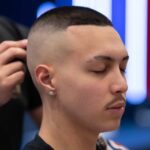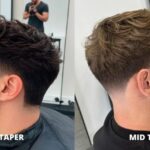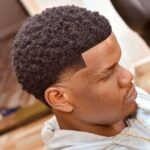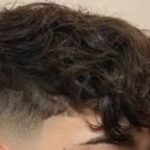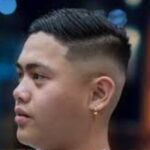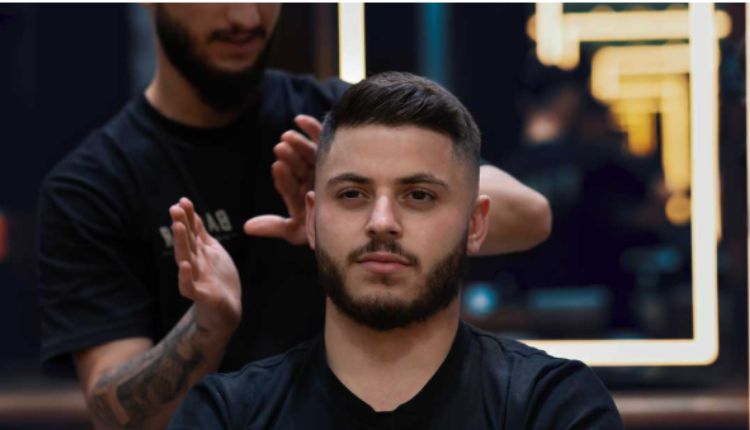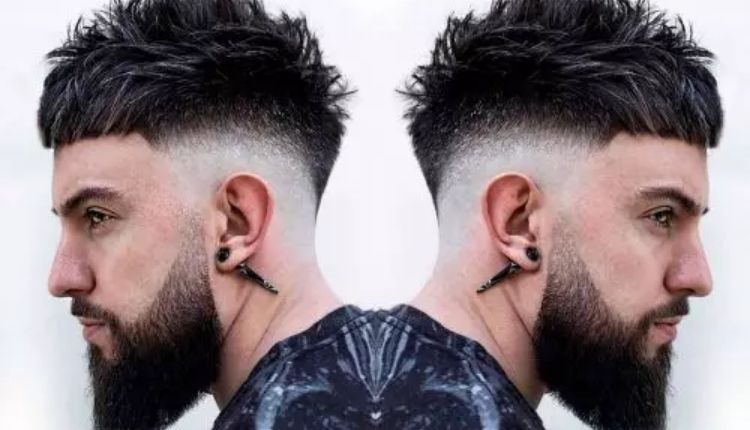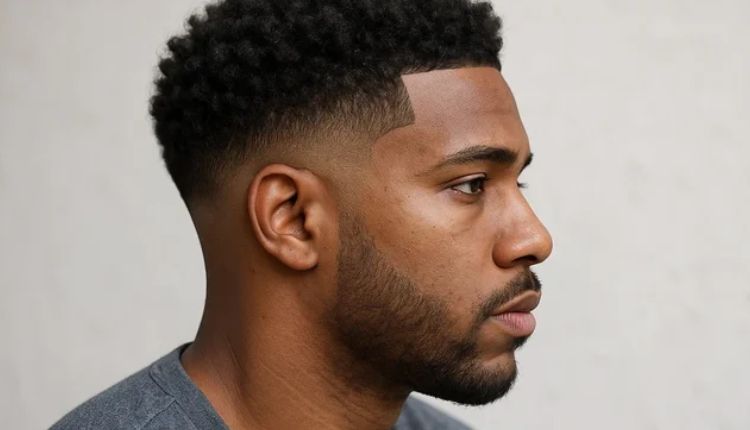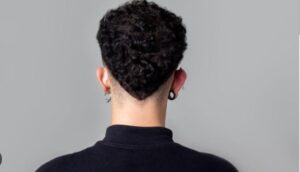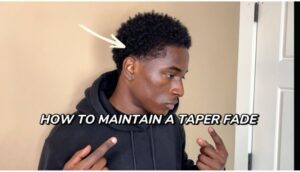It is a great combination of bold and subtle while also having a clean, fresh look suitable for a large range of personality types and hairstyles. The middle fade is a great style choice for guys who want something modern without sacrificing professionalism, whether you’re getting ready for formal wear or something a bit more casual. In this article, we will cover the history of the middle fade, its different styles, and how you can maintain this trendy haircut.
What is a Middle Fade?
The middle fade, otherwise known as the “mid fade”, is essentially a variation of the classic fade haircut, where the transition from short hair to long hair begins approximately in the middle of the sides and back of the head. The fade, in general, makes a smooth transition between the longer locks on the top and shorter strands on the sides. The middle fade is usually done with clippers — usually starting at medium length around the temple area and then fading down to a much shorter length toward the nape of the neck. This steady fade also gives a polished, neat appearance that appealed to men all across the ag.
The middle fade is one of the most popular hairstyles for men. It can be matched virtually any top hairstyle, including slicked-back jobs, quiffs, pompadours, buzz cuts and curly hair. The fade can be as long or as short as the client desires, allowing for a heavily customized haircut that is versatile enough to match many different facial features, hair types, and personal brands.
The Middle Fade: Where It Came From
The fade haircut may have a centuries-long history, but the mid fade came into the mainstream in the 2000s. Hip-hop and the streetwear movement has also influenced it a lot ever since then. This hairstyle was seen on many celebrities, athletes and musicians, further integrating itself into popular culture.
Much like the high top fade, the middle fade originates from a time of military service when the short, clean cut was required. As time passed, barbers developed military fade into contemporary variants such as high fade, low fade, and middle fade. The middle fade sits right in between a high and low fade, providing a middle ground for a look that can be dressed up or down, which is why it is one of the most popular fades for a stylish yet clean look.
Variations of a Middle Fade
The traditional middle fade is pretty easy to make, but different personal tastes also have a variety of variations. Middle fades have several popular variants.
Taper Fade*: This version is usually less drastic than the usual middle fade. It starts out as a small bit of length, slightly longer on the sides but cuts down on top. The biggest difference is that the taper fade provides a smoother, more natural transition between the hair on top and the sides, making it the perfect choice for those who prefer a less heavy fade.
Burst Fade: A burst fade is a slightly more unique version of the middle fade, with the fade concentrated specifically around the ear area, giving a “burst” effect. Stylists often offer this as an option for those who want something little more than just a haircut to add to the hair.
Low Taper Fade: A low taper fade starts lower on the head, usually around the ear, with the fade becoming a more extreme leave as it progresses toward the nape. This is a softer contrast than the classic middle fade, yet still gives you a clean-cut, sharp look.
Disconnected Fade: A disconnected fade is a trendy impermanent alternative for a more fashionable, gritty look. This archetype has a clear distinction between the longer end above and the shaded side. This daring option works with a range of hair types and lengths.
Skin Fade: This is an even more extreme version than faded, with the hair on the sides shaved down to skin, creating a sharper contrast with the hair on top. It’s a bolder, more daring choice that puts the sharpness of the fade front and center.
Styling the Middle Fade
One of the best things about the middle fade is how easy the look is to style. There are many ways to style this haircut, depending on your preference and your hair length. There are several commonly used styles:
Slicked-Back Hair: For a more refined look, slick your longer top hair back with a comb and firm-hold gel or pomade. The style suits the neat lines of a middle fade and is an ideal choice for smart events.
Textured Crop: Try a textured crop — perfect for a more casual laid-back vibe. On top, use a super-light styling product, such as a matte pomade or clay, to achieve a natural-looking volume and texture. It is the spotted nice everyday look.
Pompadour: For vintage-inspired styles, a pompadour goes well with a middle fade. The a bland spines cast on top contrast perfectly with the worn sides to create a dynamic yet formal silhouette that stands out.
Quiff: Adding volume to the top, the quiff keeps the sides tidy and in control. It’s pretty much ideal for mid-length hair like this and beautifully frames the face.
Curly or Wavy Hair: For those with naturally curling or wavy hair, the middle fade can be worked to enhance your natural texture. Apply a curl cream or mousse to enhance your curls and let the fade enhance the shape of your curls.
Maintaining the Middle Fade
As with any fade haircut, the middle fade needs a frequent touchup to ensure it looks fresh. Because the fade is a graduated cut, the short lengths around the sides can grow out fast, resulting in an uneven result. For a touch up, you should get to your barber every 3 to 4 weeks to maintain your fade. To ensure the fade is both smooth and consistent, leaving you looking fresh and clean.
Between salon visits, however, you can get the length of the hair on top in check by trimming it yourself, only don’t overdo it. Make sure to groom the longer hair on the top, avoid trimming the fade too high up on the sides.
Who Can Wear the Middle Fade?
For the most part, the middle fade is an incredibly versatile haircut and so it can pretty much work on anyone. When thinking about whether a middle fade would suit you, here are a few things to bear in mind:
Face Shape: The middle fade suits a wide range of face shapes. The longer hair on top will give you extra height while making a round face longer. For those with a square jawline, the fade helps ease the edges and provides a more symmetrical appearance.
Hair Texture: The middle fade works for all hair textures too, so embrace your natural texture! It is particularly effective on thick or coarse hair as the fade reduces the bulk and gives a neater shape.
Lifestyle: The middle fade has versatility enough to suit both professional and casual settings. Whether you work in a corporate environment or are simply after a more casual vibe, this hair style can be easily dressed up or down to suit.
Wrapping It Up
The middle fade is a classic and versatile haircut that suits many hair types, face shapes, and personal styles. The middle fade can be tailored to your preference, whether you prefer a sharp, clean-cut appearance or a more relaxed look. A clean, fresh, stylish haircut everything we need to stand out in the crowd – and, with the best fade haircut styles, the right methods for styling it and the maintenance necessary for the faded hair, you can find yourself with either a perfect long or short hair fade. Whether you’re visiting the barber for the first time or are already a fan of the fade, the middle fade is a classic option that never goes out of style year after year.

